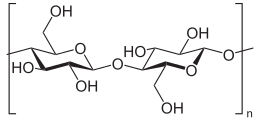A TRIAC (triode for alternating current; also bidirectional triode thyristor or bilateral triode thyristor[citation needed]) is a three terminal electronic component that conducts current in either direction when triggered. The term TRIAC is a genericised trademark.
TRIACs are a subset of thyristors (analogous to a relay in that a small voltage and current can control a much larger voltage and current) and are related to silicon controlled rectifiers (SCRs). TRIACs differ from SCRs in that they allow current flow in both directions, whereas an SCR can only conduct current in a single direction. Most TRIACs can be triggered by applying either a positive or negative voltage to the gate (an SCR requires a positive voltage). Once triggered, SCRs and TRIACs continue to conduct, even if the gate current ceases, until the main current drops below a certain level called the holding current.
Gate turn-off thyristors (GTOs) are similar to TRIACs but provide more control by turning off when the gate signal ceases.
The bidirectionality of TRIACs makes them convenient switches for alternating-current (AC). In addition, applying a trigger at a controlled phase angle of the AC in the main circuit allows control of the average current flowing into a load (phase control). This is commonly used for controlling the speed of a universal motor, dimming lamps, and controlling electric heaters. TRIACs are Bipolar devices.
 The circuit symbol for a TRIAC, where "A1" is Anode 1, "A2" is Anode 2, and "G" is Gate. Anode 1 and Anode 2 are normally termed Main Terminal 1 (MT1) and Main Terminal 2 (MT2) respectively | |
| Type | Passive |
|---|---|
| Pin configuration | anode1, gate and anode2 |
https://en.wikipedia.org/wiki/TRIAC
------------------------------------------------------------------------------------------------------------------------
Above. Applied Science - Holograms on chocolate
How To CAKE That - Holographic Rainbow Edible Cellophane

https://en.wikipedia.org/wiki/Cellulose
In The Kitchen With Matt - How to Make Sugar Glass | Easy Edible Glass Recipe
Collins Key - DIY Edible Water Bottle YOU CAN EAT!!!!! *NO PLASTIC* Learn How To Make The Best DIY Liquid Food
No comments:
Post a Comment